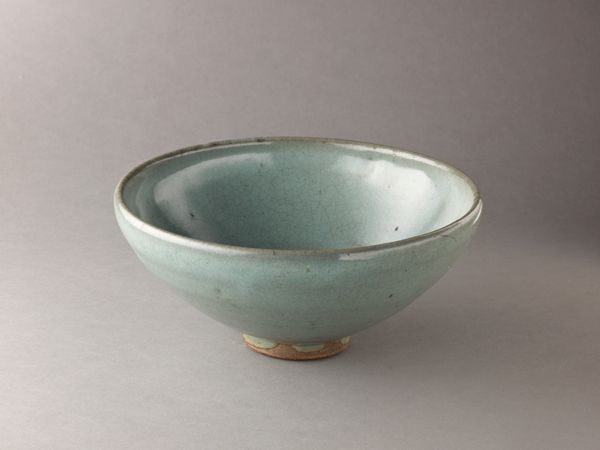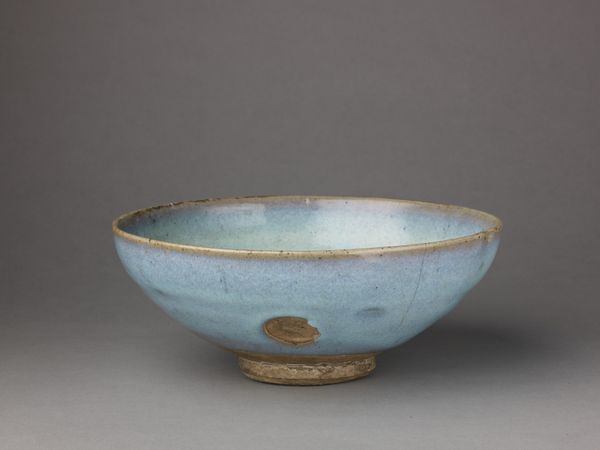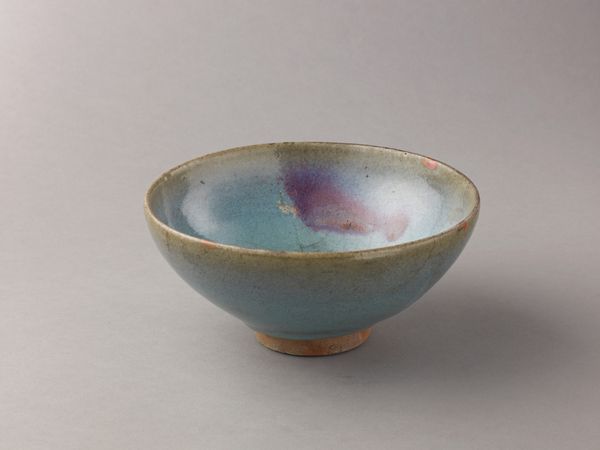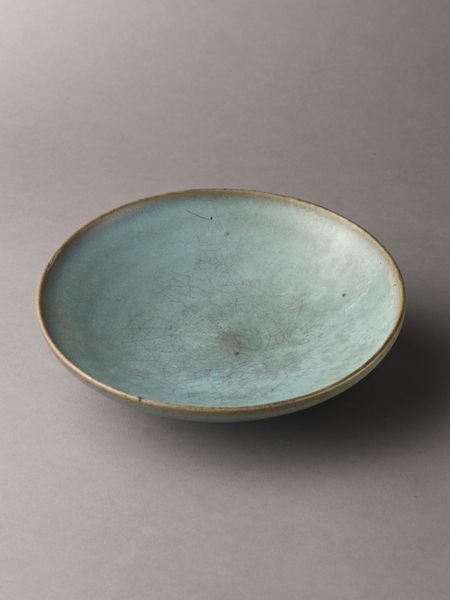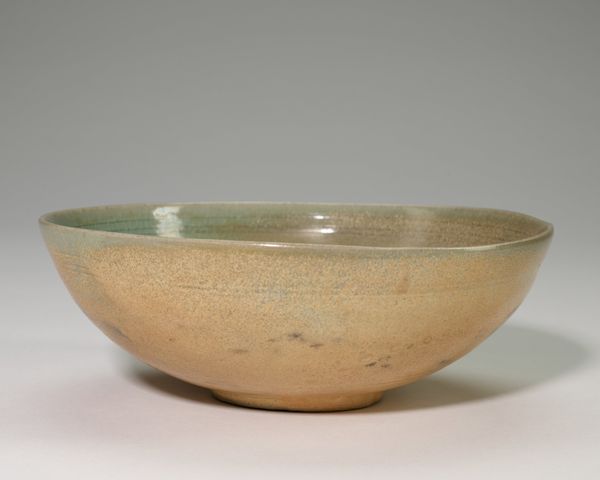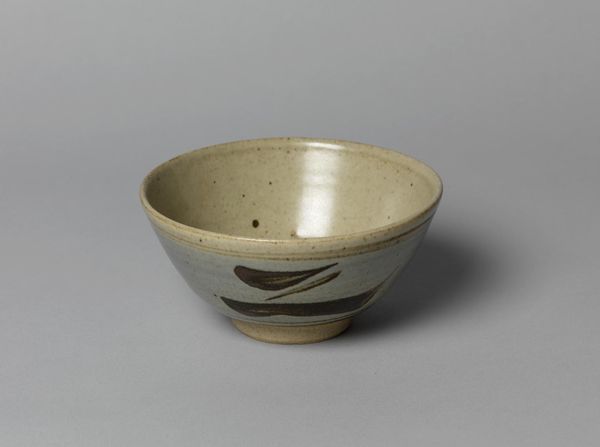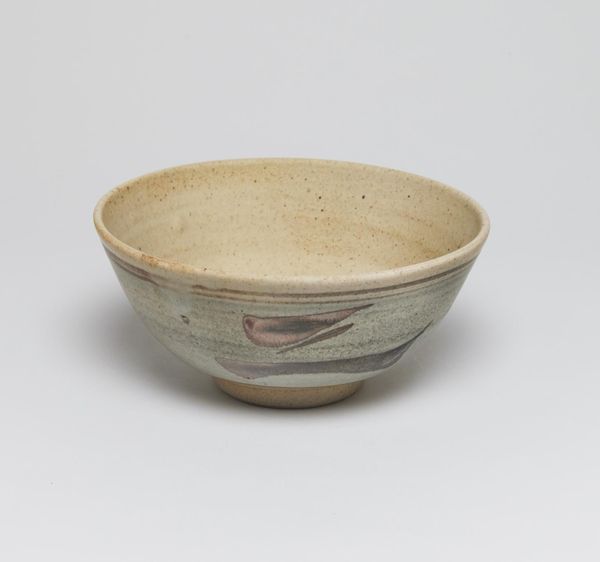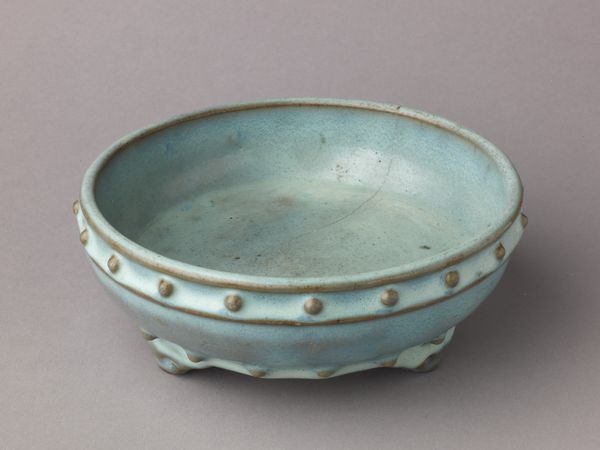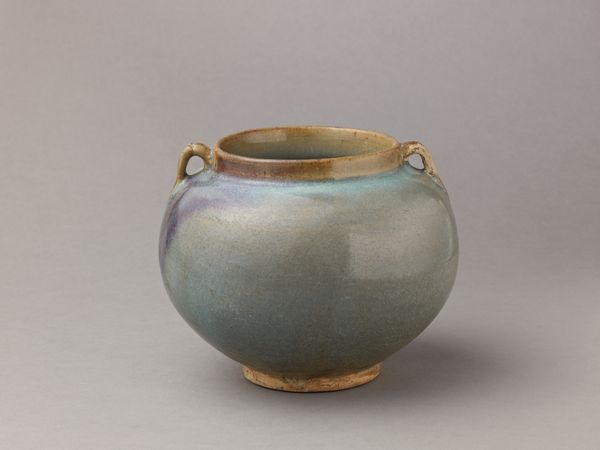
ceramic, earthenware
#
medieval
#
asian-art
#
ceramic
#
earthenware
#
stoneware
#
ceramic
Dimensions: Diameter: 7 3/8 in. (18.7cm.)
Copyright: Public Domain
Curator: Here we have a Chinese "Deep bowl" dating from between 1200 to 1400 AD, placing it firmly in the medieval period. It's currently part of the collection at the Metropolitan Museum of Art in New York. Editor: It feels quite serene, almost meditative. I am struck by the crackled pale celadon glaze with those plum-colored splashes, very subdued, yet impactful. Curator: Absolutely, the glaze is key. Celadon was highly prized, emulating jade, a symbol of virtue. This bowl is stoneware and earthenware. Editor: It makes me consider the access to these rare materials; for whom was such fine stoneware crafted during this era of shifting powers? Was this for the emperor or local elite? Curator: Examining the political history during the medieval Song and Yuan Dynasties provides fascinating context. This object reveals power and elite identities. These bowls were most probably made for scholar-officials or temples, signaling wealth and refinement. The placement in the Met tells another story of western influence in China. Editor: Right. Considering the craftsmanship, this object really makes me wonder about the anonymous labor behind its production and circulation. How many hands did it pass through, what purposes did it serve along the way? Is this museum context respectful of its previous functions? Curator: That’s a valid point. It is important to acknowledge that it's a fragment of its initial setting and purpose and how contemporary display constructs how audiences see value. The plum blossom motif—if it is that—was a later addition during the Yuan Dynasty. They symbolized perseverance in adverse conditions and winter. Editor: Understanding the nuances behind production allows me to see more; perhaps the flowers reflect a narrative of the potter. Regardless, bringing these socio-political factors to the foreground provides insight into art and visual culture’s capacity to express values and meanings in new, progressive ways. Curator: Indeed, by delving into those histories we move beyond aesthetic appreciation and acknowledge cultural importance, then consider questions around global trade and collecting practices. Editor: Agreed, its journey reveals much more than the object alone can convey. This ceramic is just one fragment of our collective history.
Comments
No comments
Be the first to comment and join the conversation on the ultimate creative platform.
